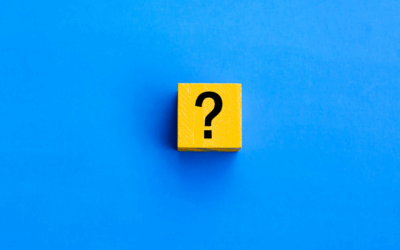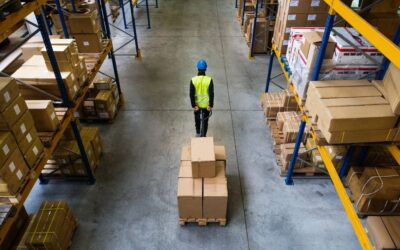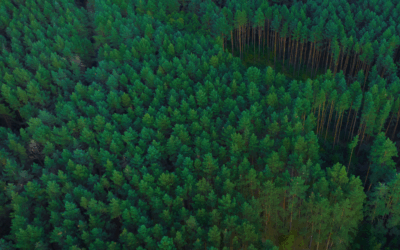Remember when we used to just buy stuff, use it, and throw it away without a second thought? That throwaway mindset is quickly shifting thanks to something called the “circular economy.”
In its simplest form, the circular economy is about keeping materials in use for as long as possible, extracting their maximum value, and then recovering and regenerating products when they reach the end of their life. Unlike our traditional “take-make-dispose” approach that treats resources as virtually unlimited, the circular model recognizes our planet’s boundaries.
And it’s not just environmental activists getting excited about this. Major brands from IKEA to Adidas are redesigning their products and business models to embrace circularity. Why? Because consumers are demanding it, resources are becoming scarcer, and surprisingly, there’s money to be made in going circular.
What is Circular Economy in a Nutshell?
At its heart, the circular economy is about reimagining waste not as something to discard, but as a valuable resource for creating something new. It’s inspired by natural systems, where nothing is wasted – fallen leaves decompose to nourish new growth, and everything plays a part in the greater ecosystem.
The circular approach revolves around three principles that are changing how businesses operate:
1. Say goodbye to waste from the start: Designing products that minimize or eliminate waste and pollution from the get-go.
2. Keep stuff in use (and useful) as long as possible: Maintaining, repairing, reusing, refurbishing, and recycling to extend product lifespans.
3. Help nature bounce back: Creating systems that actively restore and regenerate natural environments.
Instead of the one-way trip from factory to landfill, circular thinking creates loops: sharing platforms that maximize use of products, repair services that extend lifespans, remanufacturing processes that give new life to old components, and recycling systems that turn waste into raw materials.
Win-Win-Win: Good for Earth, Wallets & Communities
The beauty of the circular economy is that its benefits extend beyond just environmental protection. It’s a rare triple win scenario:
For the planet, it means fewer resources are extracted, less waste is in landfills and oceans, carbon emissions are reduced, and there are spaces for nature to recover. When products are designed to be reused or recycled, we dramatically reduce the pressure on our natural systems.
For businesses and economies, circularity opens doors to innovation and new revenue streams. Companies are finding competitive advantages in take-back programs, product-as-a-service models, and materials recovery. The World Economic Forum estimates circular economy opportunities could unlock $4.5 trillion in economic growth by 2030.
For communities, the transition creates local jobs in remanufacturing, repair, recycling, and rental services – jobs that can’t be easily outsourced. It also makes products and services more accessible through sharing and leasing models that don’t require hefty upfront purchases.
Perhaps most importantly, the circular economy helps break the link between economic prosperity and resource consumption – proving we can thrive without continuously taking more from the planet.
10 Cool Ways the Circular Economy Is Already Working
1. Plastic Fantastic
Companies like Patagonia and Adidas are transforming plastic bottles into clothing and shoes. Adidas alone has produced millions of shoes using Parley Ocean Plastic, material made from recycled marine plastic waste. These products don’t just reduce waste; they raise awareness about plastic pollution while giving waste materials new value.
2. Share & Share Alike
Platforms like Airbnb, Turo, and even neighborhood tool libraries are maximizing the use of underutilized assets. When the average power drill is used for just 12-15 minutes in its entire lifetime, sharing makes both environmental and economic sense. Users get access without ownership, while resources are used more efficiently.
3. From Scraps to Soil
Municipal composting programs and innovative startups are transforming food waste into rich soil amendments. Companies like Compostery and Lomi are even bringing composting solutions into urban homes with sleek, odor-free systems. The result? Less methane-producing waste in landfills and more nutrients returning to depleted soils.
4. Fix It, Don’t Pitch It
Repair cafés are popping up worldwide, offering free repair help for everything from clothes to electronics. Companies like Patagonia’s Worn Wear program and iFixit are championing repairability, providing tools and instructions to extend product lifespans and fight planned obsolescence.
5. Built to Last
Durable design is making a comeback with companies like Fairphone creating modular smartphones where individual components can be replaced when they break or become outdated. This approach reverses the trend of unrepairable electronics with sealed components and proprietary parts.
6. Power Without the Pollution
Renewable energy fits perfectly within circular thinking – harnessing abundant natural resources like sun and wind rather than extracting finite fossil fuels. Solar panel and wind turbine manufacturers are now designing for eventual recycling, ensuring materials can be recovered at end-of-life.
7. Package Deal
Loop, TerraCycle’s reusable packaging service, delivers everyday products in durable containers that are collected, cleaned, refilled, and reused. Even big brands like Coca-Cola are exploring refillable bottle systems that harken back to earlier models of container reuse.
8. Rent the Function
Signify, formerly Philips Lighting, offers “lighting as a service” where they retain ownership of light fixtures while customers pay for the light itself. Similarly, Rolls Royce’s “power by the hour” model for jet engines focuses on delivering the function (thrust) rather than just selling the product. These approaches incentivize manufacturers to build longer-lasting, more efficient products.
9. Trash Transformed
Upcycling takes waste materials and transforms them into products of higher value. Companies like Elvis & Kresse turn decommissioned fire hoses into luxury bags, while Rothy’s transforms plastic bottles into stylish shoes. These creative approaches add value rather than just recovering materials.
10. Nature Knows Best
Regenerative agriculture practices work with natural systems to restore soil health rather than depleting it. Companies like Patagonia Provisions are supporting farmers who use methods that sequester carbon, increase biodiversity, and improve water cycles – going beyond sustainability to actively heal damaged ecosystems.
Big Brands Getting in on the Action
Major companies are realizing circular models aren’t just for eco-startups – they’re good business for established brands too.
Thousand Fell
This footwear company has built circularity into its business model from day one. When customers are done with their sneakers, they can return them to Thousand Fell, who will recycle the components into new shoes. The incentive? A $20 credit toward your next pair. It’s a win for customers, the company, and the planet.
IKEA
The furniture giant opened its first second-hand store in Sweden and launched a buy-back program for unwanted furniture. Customers receive store vouchers for returning items, which IKEA refurbishes and resells. It’s part of IKEA’s larger strategy to become fully circular by 2030, extending the life of its products and materials.
Burger King
Fast food creates mountains of single-use packaging, but Burger King is testing reusable containers in select cities. Customers pay a small deposit for their food containers and cups, which is refunded when they return the packaging for cleaning and reprocessing. The system, powered by Loop, could dramatically reduce waste from take-out meals.
Adidas
Adidas has developed the UltraBoost DNA Loop shoes made from a single material (TPU) with no glue – making them fully recyclable. The twist? Customers don’t technically own them. Instead, they use them and return them when they’re done, allowing Adidas to recycle the material into new shoes. It’s a radical rethinking of the consumer relationship with products.
Hurdles to Jump
Despite its promise, the circular economy faces significant challenges that can’t be ignored.
Some materials simply don’t recycle well with current technology. Most plastics can only be recycled a few times before quality degradation makes them unusable, and complex products with mixed materials are particularly difficult to separate and process.
Even when recycling is technically possible, it requires energy and resources. Processing, transportation, and remanufacturing all have environmental footprints that must be accounted for when assessing the benefits of circular systems.
The economics can be tricky too. Circular business models often require higher upfront investments in durable materials, redesigned products, and new infrastructure. The long-term benefits may outweigh these costs, but many businesses struggle with the initial transition.
There’s also the “downcycling” problem – many materials lose quality through recycling processes. Paper fibers get shorter with each recycling cycle, and many plastics can only be turned into lower-quality products, not identical replacements.
Who’s Helping Make This Happen
Transitioning to a circular economy isn’t something any single company or government can achieve alone – it requires coordination across entire value chains.
Collaboration is key as we reimagine entire systems. Designers need to work with material scientists, manufacturers with recyclers, and policymakers with businesses to create the conditions where circular models can thrive. Policy frameworks like the European Union’s Circular Economy Action Plan are setting ambitious targets and creating incentives for change.
Moving Toward a Circular Tomorrow
The shift to a fully circular economy won’t happen overnight, and that’s okay. Even small steps matter in this transition.
As recycling technologies improve, materials that were once impossible to recover are becoming recyclable. Chemical recycling processes are beginning to address the limitations of mechanical recycling for plastics. Digital technologies like blockchain are making it easier to track materials through complex supply chains.
Consumer preferences are evolving too.
Many people are choosing brands with transparent, sustainable practices and embracing access over ownership through sharing platforms and subscription services.
Perfect circularity may be the north star, but every product kept out of the landfill, every material recycled, and every business model redesigned for longevity represents progress.
Jumping Into the Circle
Ready to be part of the circular revolution? Whether you’re a business leader or an everyday consumer, there are ways to embrace circularity today.
For businesses, start by examining your products and processes through a circular lens. Could your packaging be reusable? Might a service model work better than a traditional sales approach? Are there waste streams that could become valuable inputs?
For individuals, consider how you consume. Repair items when possible, choose durable products over disposable ones, support companies with take-back programs, and explore sharing or renting options for occasionally-used items.
The circular economy isn’t just a nice-to-have – as resource constraints tighten and waste problems grow, it’s becoming a necessity. But it’s also an opportunity to reimagine our relationship with stuff, moving from an extractive, wasteful system to one that works more like nature – where nothing is wasted and everything has value.
Imagine a future where products are designed from the start for multiple lifecycles, where business models reward longevity instead of planned obsolescence, and where our economic success isn’t tied to consuming ever more resources. That’s the promise of the circular economy – and it’s within our reach if we embrace the principle that what goes around, should indeed come around.




